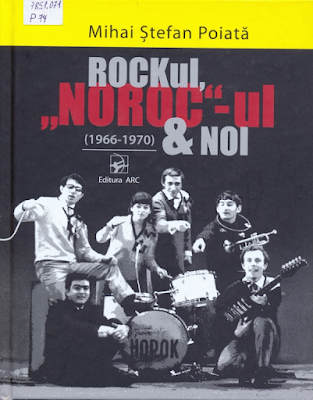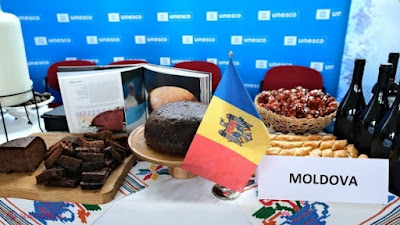The death of Stephen the Great took place on July 2, 1504, at the age of 71. Around him were the boyars and close governors, his family and descendants, but also the doctors who had tried in vain to save his life. The news of the death of the Moldavian voivode made the rounds of Europe and was presented in numerous chronicles. What remains shrouded in mystery is the true cause of his death. The doctors sent to treat the voivode, as well as historians, developed several hypotheses.
Stephen the Great is the most brilliant representative of the Musatin dynasty. He was the son of ruler Bogdan II, who ascended the throne of his father, Alexander the Good, in 1449, being killed two years later, in 1451, in Reuseni. The killer was precisely his half-brother, Petru Aron.
Stephen the Great managed to save his life through an exile in Transylvania, where he befriended another wandering nobleman's son, Vlad Țepeș. The chances of Stephen the Great to reach the throne of Moldavia seemed small, however, in 1457, with the help of an army sent by Vlad Țepeș, who had become ruler of Wallachia, and with that of the Moldavians from the Low Countries, who revolted against Petru Aron , he succeeded in defeating his enemy and crowning himself.
He managed to restore the economy of Moldova and create a significant army. He fought, in turn, with all his neighbors: Poles, mountaineers, Hungarians, Tatars and Turks. He achieved significant victories, being defeated only twice.
The battle for the fortress of Chilia, the possible cause of death
Stephen the Great conquered the fortress of Chilia, which had been under the control of the Hungarians since the time of Iancu de Hunedoara. In 1484, the Moldavians lost Chilia and the White Citadel to the Ottoman Empire, which ruled them until 1812. But these losses were compensated in Transylvania, where Stephen the Great's suzerain, King Matia Corvin, gave him the fiefs of Ciceul and Baltă Citadel, and in Poland, where Stephen the Great took possession of Pocutia, an old fief of the Moldavian rulers.
In 1504, Moldova was larger, stronger and more respected than ever. Stephen the Great ruled the country with an iron fist, having control over the boyars and stable relations with the neighbors, despite the constant danger coming from the south. But the long wars shook his health.
It is said that the ruler of Moldavia had an unhealed wound from the battle of Chilia, from the year 1462. It is not known how a wound could not heal for 42 years. It is also possible that the ruler suffered from gout. Stephen the Great was tormented by the diseases that Venetian, Polish, Hungarian and Genoese doctors had tried, without success, to cure him.
„The wound that Stefan received on his leg during the first siege of Chilia in 1462 did not prevent him from fighting so many wars and ruling his country for over four decades. Not being taken care of, however, as it should be, she did not close until the end of her life”, wrote the historian Constantin C. Giurăscu, in his work „History of Romanians”.
In 1504, three doctors, an Italian, a Hungarian and a Jew tried to save the ruler's life. In desperation, the wounds on his legs were cauterized, but as a result of this treatment, his condition worsened. Some historians claim that, before his death, Stephen the Great would have become a monk, after he decided to cede the reign to his son, Bogdan.
The death of Stephen the Great
Stephen the Great died, surrounded by his family and subjects, on July 2, 1504. He was 71 years old. The ruler's death was recorded by chroniclers from all over Europe, as he was one of the well-known monarchs of the time.
The Polish historian Maciej Miechowita stated that the Moldavian voivode suffered from gout or gout. This was considered the disease of rich people, because it was aggravated by the consumption of game meat, in particular, wine and other such foods. Without the necessary medical knowledge, the voivode was not cared for as it should be, without an adequate regime and treatment. What made him unable to move his hands and feet at all in the last year of his life.
"In the year 1504, on July 2, Tuesday, 1 o'clock, after sunrise, as fate would have it, Stefan, the voivode of Moldavia, died, burdened by battles, old age and gout. Nature had made him lucky, clever and brave. He had driven the Hungarian king Matia from Moldavia, beaten him in the city of Baia and himself hit him in three places in the back. He also - a wonderful deed - defeated with a handful of men and shamefully drove out Sultan Mohammed, who had 120,000 soldiers. He too, with a gun in his hand, had chased the Polish king Ioan Albert across the borders of Moldavia, violating the covenant by which his free exit from the country had been ensured before. He also crushed, more than once, and repulsed the Tatars beyond the Volga and those from Crâm", wrote the Polish chronicler Miechowita upon the death of the Romanian ruler.
The great voivode was buried at the Putna Monastery, along with his wives and children. Stephen the Great was loved by the people and respected by foreigners. The fame enjoyed by the Moldavian voivode was so great that his name entered ballads, legends and popular songs passed down from generation to generation, until today.
































